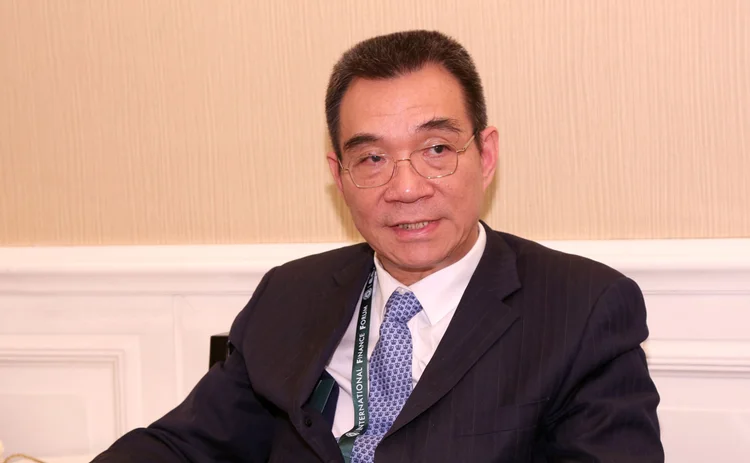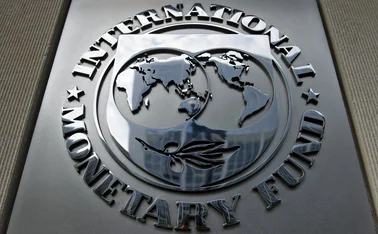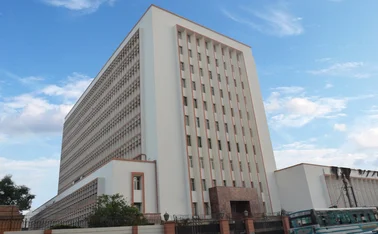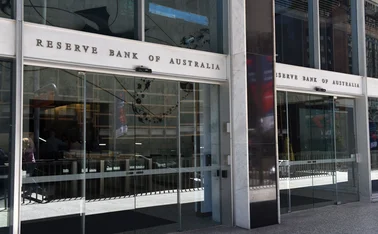
Justin Lin on fixing the fault lines of the international monetary system
A supranational reserve currency could be created to prevent repeat financial crises

The hypothesis most frequently cited as the cause of the global crisis centres on imbalances in the global economic and monetary system. In particular, large surplus countries caused tectonic market distortions by using their foreign reserves to purchase US Treasury bills. These purchases of government securities depressed interest rates in the US, which in turn sparked a debt-fuelled spending spree by the country's consumers that ultimately resulted in housing and other bubbles in the US. Once the bubble finally burst, the US faced a major financial crisis that resulted in an economic crisis that rippled across the world. Potentially, this hypothesis is plausible. But what caused the large surpluses in China and other Asian countries? There are three commonly accepted theories.
The first one was the east Asian economies adopted an export-orientated strategy and, as a result of their exports, acquired large trade surpluses. The second common hypothesis is that east Asian economies learned a lesson in the 1998 crisis. They understood that if they did not have large enough foreign exchange reserves, their countries could once more be subject to speculative attacks. So for self-insurance, they started to accumulate reserves by exporting more. The third, and most widely accepted, hypothesis is that imbalances were the result of east Asian economies - and China, in particular - manipulating their foreign exchange rates.
Again, these hypotheses appear plausible, but do they stand up to an examination of the facts? Looking at the export-driven development hypothesis, we know that east Asian economies had adopted export-driven growth strategies since the 1950s and 1960s. For China, it started later, in the 1970s. Yet we know that before 2000, trade was basically balanced in east Asian economies, and some economies - such as South Korea - actually ran a trade deficit. So this kind of export-orientated strategy does not necessarily lead to huge surpluses and most east Asian economies did not have large trade surpluses until about 2000. It seems illogical to attribute a strategy that has been in use for more than half a century to explain what happened in just the last 10 years.
In the second hypothesis, all the east Asian economies increased their trade surpluses a lot and ramped up their reserves. But we also observed some other countries, such as Japan and Germany, substantially increasing their trade surpluses during the same period of time. But they did not have any particular motivation for accumulating reserves as a means for self-insurance. Since the yen is an officially sanctioned reserve currency, Japan would not need to stockpile foreign reserves against some form of speculative attack, yet its foreign reserves also grew.
The final hypothesis, that east Asian economies manipulated their exchange rates to increase their exports, also looks inconsistent. That's because the trade surpluses of other competing economies should have been reduced. But the fact is that almost all other countries competing with east Asian economies also increased their trade surpluses and reserves. So there is an inconsistency.
The value of Chinese currency, in particular, has been the target of discussion in the past decade as the cause of global imbalances. This issue was first raised in 2002. The accusation was that China was manipulating its currency to increase its export competitiveness. But the fact remains that in 2003, China's trade surplus was smaller than its surpluses in 1997 and 1998. In 1997 and 1998, during the east Asian financial crisis, China did not devalue its currency despite the devaluations of currencies of many of its neighbours - indeed, at that time, everyone said the Chinese currency was overvalued.
If in 1997-1998, China's currency was overvalued, then its trade surplus should have been smaller than in 2003-2004. But actually, in 2003-2004, the trade surplus in China was smaller than in 1997-1998. So it seems impossible for the Chinese currency to have been undervalued in 2003 and 2004. Moreover, the Chinese trade surplus did not become particularly large until 2005. And between 2005 and 2006, the renminbi appreciated by about 20% against the dollar. However, even this appreciation did not result in a decrease in China's trade surplus with the US. At the same time, many developing countries were competing with China, but their trade surpluses did not decline - and again their accumulation of reserve also continued to increase.
All the hypotheses point to east Asian economies as the cause of global imbalances and the global crisis. However, the issue of global imbalance also manifests itself in the trade deficit in the US. But this deficit has been falling. The US trade deficit with east Asian economies as a percentage of its total trade deficit declined from 51% in the 1990s down to about 38% in 2007. This implies that the east Asian contribution to global imbalances declined instead of increased. Therefore, some kind of alternative hypothesis is in need to explain the trade deficit in the US.
A principal reason for the growth in China's trade surplus with the US was the relocation of production from east Asian economies to China and the transfer of the trade surpluses from other east Asia economies to China. In 2001, China ran a huge trade deficit with other east Asian economies. So we need to have a new hypothesis that can be consistent with the evidence. And I believe the only hypothesis that can be consistent with evidence is that global imbalances and the global crisis were triggered by the current international monetary system that uses the dollar as a global reserve combined with some policy mistakes in the US.
We know that in the 1980s there was a trend towards financial deregulation in the US that allowed financial institutions to operate with high levels of leverage that resulted in an increase in liquidity. Secondly, in 2001, when the US was hit by the burst of the dotcom bubble, the US Federal Reserve deployed very loose monetary policy to help the financial system to recover. The combination of low interest rates and high leverage created excessive liquidity in the US monetary system. This excessive liquidity first aided a bubble to form in the housing market and equity market in the US. It also created huge wealth effects that fuelled household consumption. The US became a huge consumer and saved less.
At the same time, the US government, because of the Afghanistan and Iraq wars, also ran a deficit. By that time, China produced many of the goods exported to the US market, resulting in China running a large trade surplus with the US because of the high levels of consumption by the latter country. This excess of liquidity and low interest rates also encouraged speculative outflow. So in 2000, total capital outflow from the US to developing countries was $200 billion, but this figure swelled to $1.2 trillion by 2007. Large capital inflows to developing countries certainly supported the housing bubbles and investment booms in developing countries, which caused overheating in some economies.
With high levels of liquidity supporting investment, the demand for capital goods increased a lot. That contributed to capital-goods-exporting countries, such as Japan and Germany, also running large trade surpluses. Because of the boom in demand in both developing countries and some high-income countries, the demand for commodities increased, causing a commodity price boom after 2000. All the countries, except for the US, accumulated reserves because of trade surpluses and capital inflows, which they used to purchase assets in the US to earn a return for their reserves.
The hypothesis stated at the start of this article only characterises the reserve flows from the acquisitive countries back to the US. In fact, those reserves were first created in the US. So how can we prevent a similar crisis again? From my analysis, the situation only occurs because the dollar is the world's dominant reserve currency - otherwise it would be impossible for the US to run a large current account deficit for such a long time. It was the dollar's reserve currency status combined with financial deregulation in the 1980s and 1990s, plus the Federal Reserve's low interest rate policy in the 2000s, that caused the bubble and trade deficit in the US.
If we want to prevent a similar situation recurring, we need to address the conflict of interests associated with using a national currency as a global reserve currency. Many parties believe the International Monetary Fund's special drawing rights (SDR) can be a reserve or can be a way to solve the issue. But the SDR is a basket of national currencies, so it will not address the root cause of the crisis - that is, the conflict between national interest and global interest. For this reason, I propose an alternative: to have a supranational reserve currency, which I call ‘paper gold', which could avoid this conflict of interest.
P-gold would have the advantage of gold, but as it would be fiat money there could also be an increase in the supply of this reserve according to certain fixed rules, such as the k-percent or Taylor rules. To me, the needs are growth in the global economy and international trade. It would also avoid the trouble observed in the southern European countries, as every nation would use paper gold as its reserve currency while also issuing its own national currency. In the case of crisis, reserve currency appreciation can be used as a way to create a scope for structural reform.
Could people accept it? That depends on many factors. But if we opt for multiple reserve currencies, and if all the multiple reserve currency countries have certain kinds of structural problems domestically, the system is likely to remain unstable, which is a lose-lose situation for reserve currency and non-reserve currency countries.
Only users who have a paid subscription or are part of a corporate subscription are able to print or copy content.
To access these options, along with all other subscription benefits, please contact info@centralbanking.com or view our subscription options here: http://subscriptions.centralbanking.com/subscribe
You are currently unable to print this content. Please contact info@centralbanking.com to find out more.
You are currently unable to copy this content. Please contact info@centralbanking.com to find out more.
Copyright Infopro Digital Limited. All rights reserved.
You may share this content using our article tools. Printing this content is for the sole use of the Authorised User (named subscriber), as outlined in our terms and conditions - https://www.infopro-insight.com/terms-conditions/insight-subscriptions/
If you would like to purchase additional rights please email info@centralbanking.com
Copyright Infopro Digital Limited. All rights reserved.
You may share this content using our article tools. Copying this content is for the sole use of the Authorised User (named subscriber), as outlined in our terms and conditions - https://www.infopro-insight.com/terms-conditions/insight-subscriptions/
If you would like to purchase additional rights please email info@centralbanking.com








